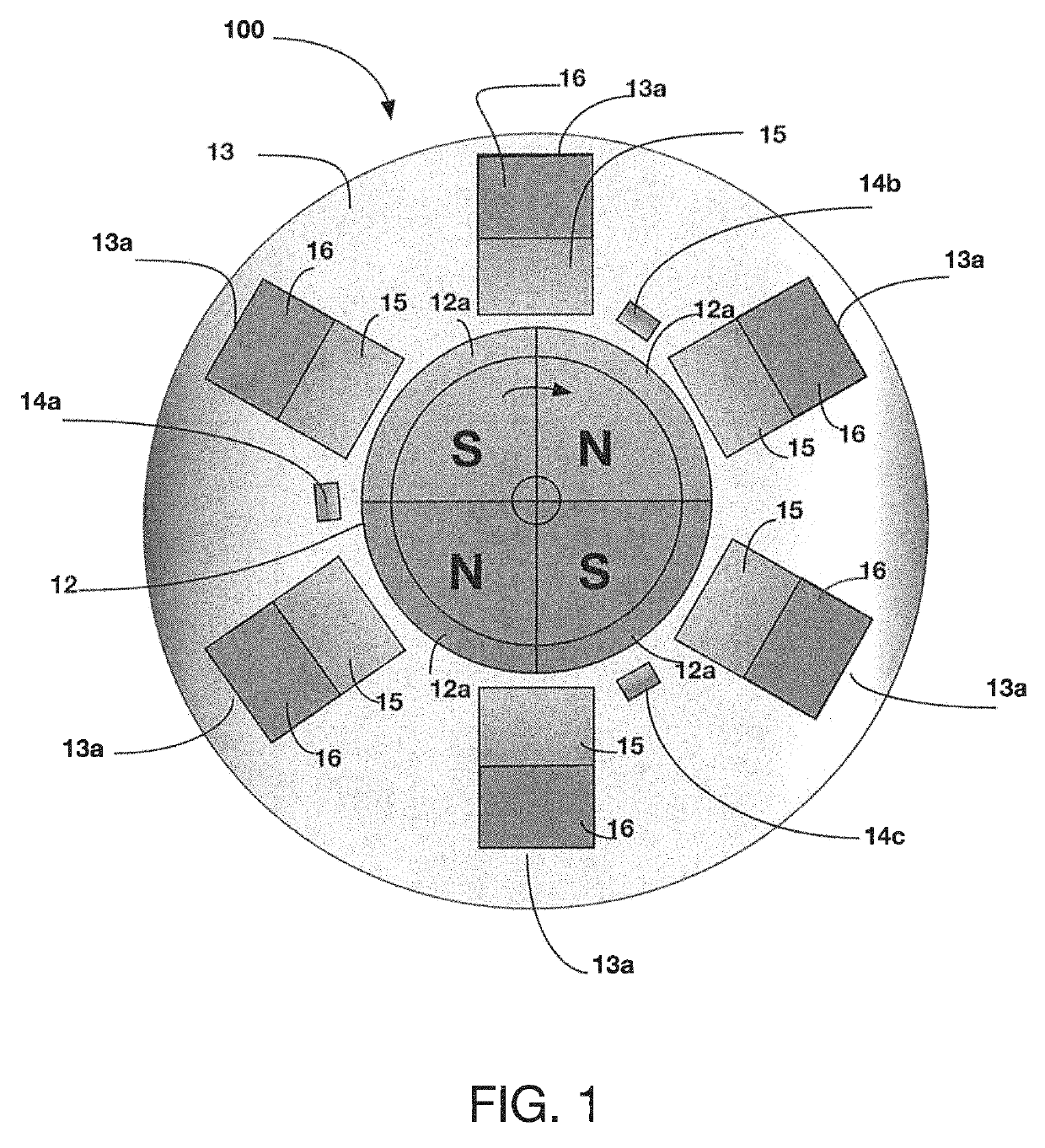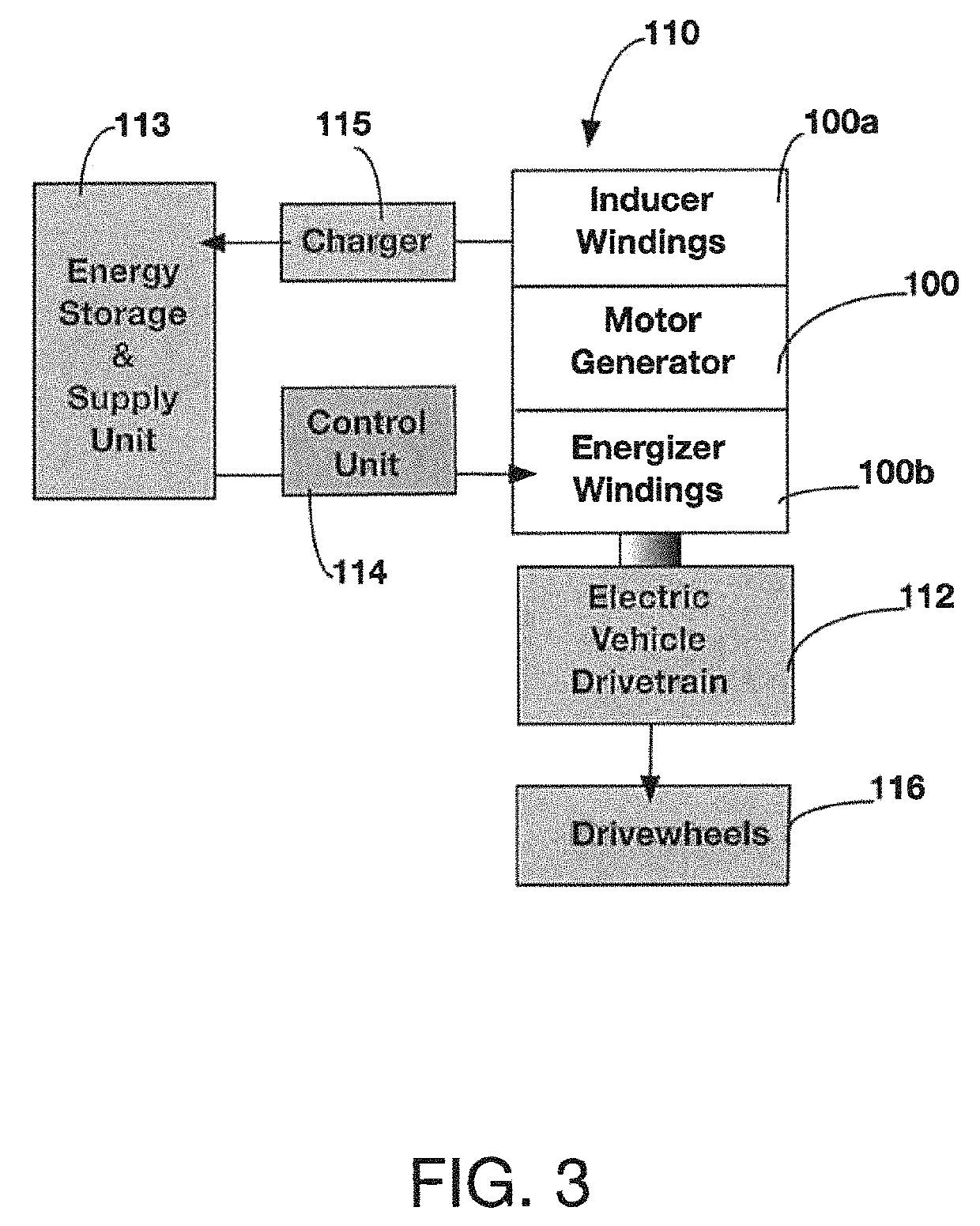Electrical energy generating brushless DC motor
a brushless dc motor and electric energy technology, applied in the direction of engine-driven generator control, electric generator control, transportation and packaging, etc., can solve the problem that their maximum potential has not yet been fully realized, and achieve the effect of limiting the amount of back-emf generated in the motor, maximizing efficiency, and increasing electrical energy
- Summary
- Abstract
- Description
- Claims
- Application Information
AI Technical Summary
Benefits of technology
Problems solved by technology
Method used
Image
Examples
Embodiment Construction
[0025]FIG. 1 depicts a BLDC motor 100, according to one embodiment. BLDC motor 100 includes a permanent magnet rotor 12, a stator core assembly 13, which includes a plurality of dual purpose stator winding assemblies 13a configured so that one segment of each stator pole windings 16 produces torque in the rotor 12 and the other segment of each stator pole windings 15 generates electrical energy output. The permanent magnet rotor 12 can be of various poles 12a (e.g., alternating N and S as shown). Thus the present embodiment can be operable using a single-phase, or multiple-phase winding configurations. These various winding phase configurations are applicable for both producing torque in the rotor and for generating electrical energy output. For the purpose of illustration, the BLDC motor 100 being described herein is an inrunner BLDC motor, although the motor can also be of outrunner configuration (not shown). For commutation, magnetic Hall Effect sensors, 14a, b, c are provided. T...
PUM
 Login to View More
Login to View More Abstract
Description
Claims
Application Information
 Login to View More
Login to View More - R&D
- Intellectual Property
- Life Sciences
- Materials
- Tech Scout
- Unparalleled Data Quality
- Higher Quality Content
- 60% Fewer Hallucinations
Browse by: Latest US Patents, China's latest patents, Technical Efficacy Thesaurus, Application Domain, Technology Topic, Popular Technical Reports.
© 2025 PatSnap. All rights reserved.Legal|Privacy policy|Modern Slavery Act Transparency Statement|Sitemap|About US| Contact US: help@patsnap.com



